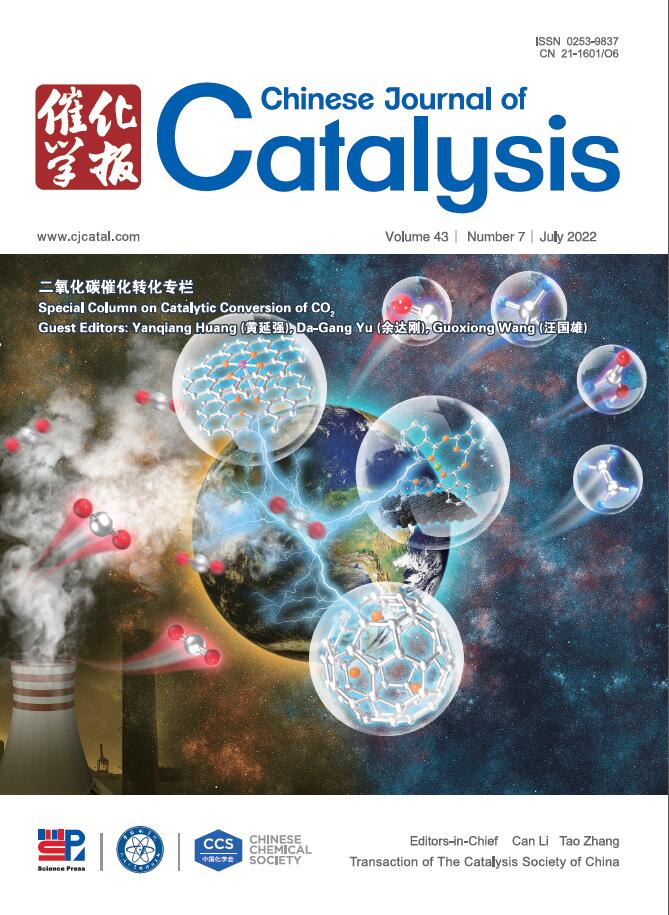Constructing S-scheme heterojunction between porphyrinyl covalent organic frameworks and Nb2C MXene for photocatalytic H2O2 production
IF 15.7
1区 化学
Q1 CHEMISTRY, APPLIED
引用次数: 0
Abstract
We have developed a novel S-scheme heterojunction photocatalyst for the photocatalytic production of hydrogen peroxide (H2O2) via a two-electron (2e−) oxygen reduction reaction. This S-scheme heterojunction Tph-Dha-COF@Nb2C was fabricated via the in-situ solvothermal growth of Tph-Dha-COF nanostructures on amino-functionalized Nb2C MXene nanoflakes (Nb2C-NH2). The integration of Nb2C significantly extended the visible light absorption of Tph-Dha-COF into the near-infrared region for photocatalytic H2O2 production. The Tph-Dha-COF@Nb2C composite demonstrated efficient charge separation, rapid electron transfer, and enhanced oxygen adsorption. Consequently, the Tph-Dha-COF@Nb2C heterojunction exhibited a high H2O2 production rate of 1833 μmol g‒1 h‒1 without sacrificial agents. In-situ Fourier transformed infrared spectroscopy and density functional theory calculations revealed the photocatalytic H2O2 production mechanism. The generated H2O2 demonstrated enhanced antibacterial activity. This work presents the first application of Nb2C in the photocatalytic synthesis of H2O2 and provides a novel strategy for constructing COF-based heterojunctions for photocatalytic H2O2 generation and wastewater treatment.
求助全文
约1分钟内获得全文
求助全文
来源期刊

Chinese Journal of Catalysis
工程技术-工程:化工
CiteScore
25.80
自引率
10.30%
发文量
235
审稿时长
1.2 months
期刊介绍:
The journal covers a broad scope, encompassing new trends in catalysis for applications in energy production, environmental protection, and the preparation of materials, petroleum chemicals, and fine chemicals. It explores the scientific foundation for preparing and activating catalysts of commercial interest, emphasizing representative models.The focus includes spectroscopic methods for structural characterization, especially in situ techniques, as well as new theoretical methods with practical impact in catalysis and catalytic reactions.The journal delves into the relationship between homogeneous and heterogeneous catalysis and includes theoretical studies on the structure and reactivity of catalysts.Additionally, contributions on photocatalysis, biocatalysis, surface science, and catalysis-related chemical kinetics are welcomed.
 求助内容:
求助内容: 应助结果提醒方式:
应助结果提醒方式:


